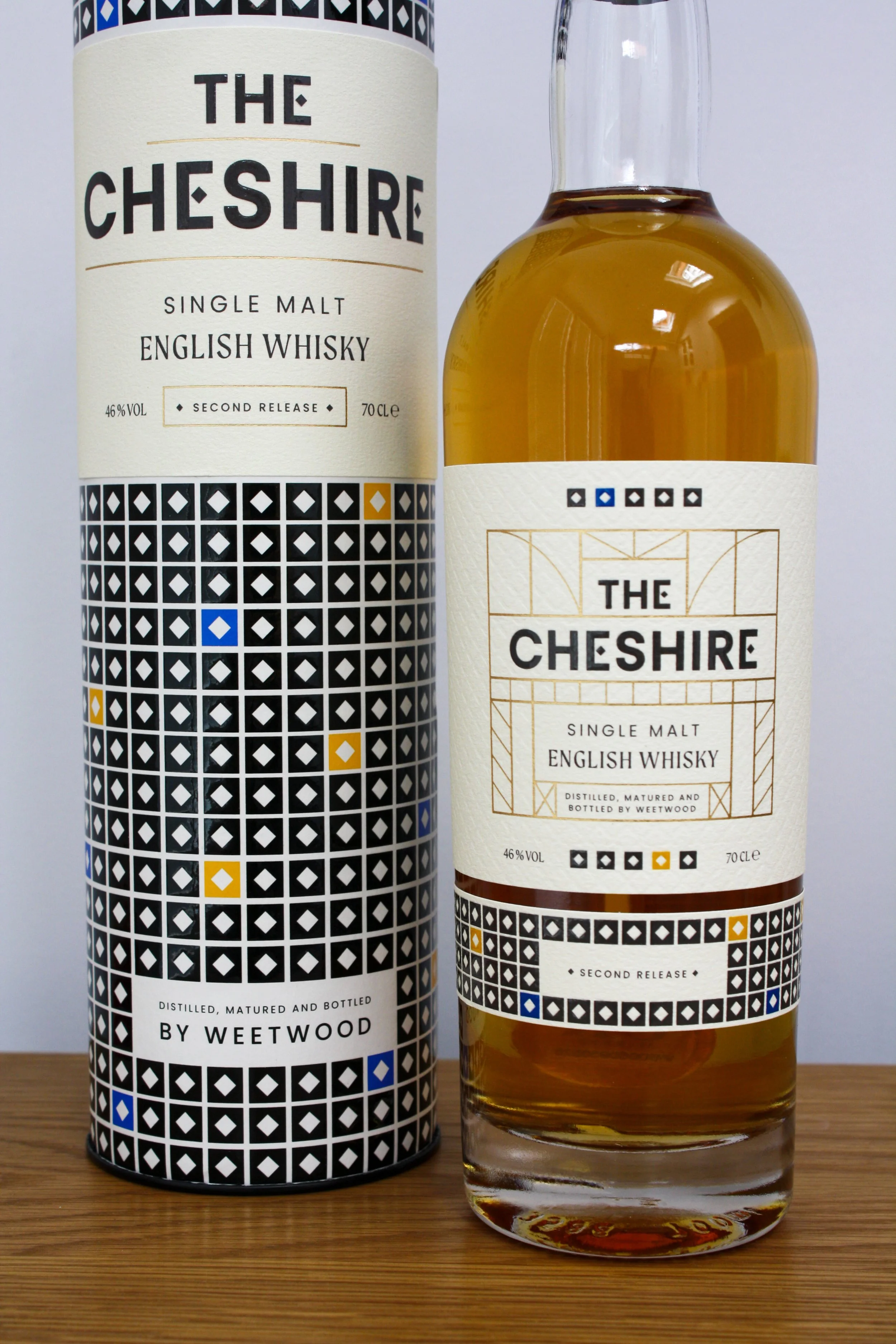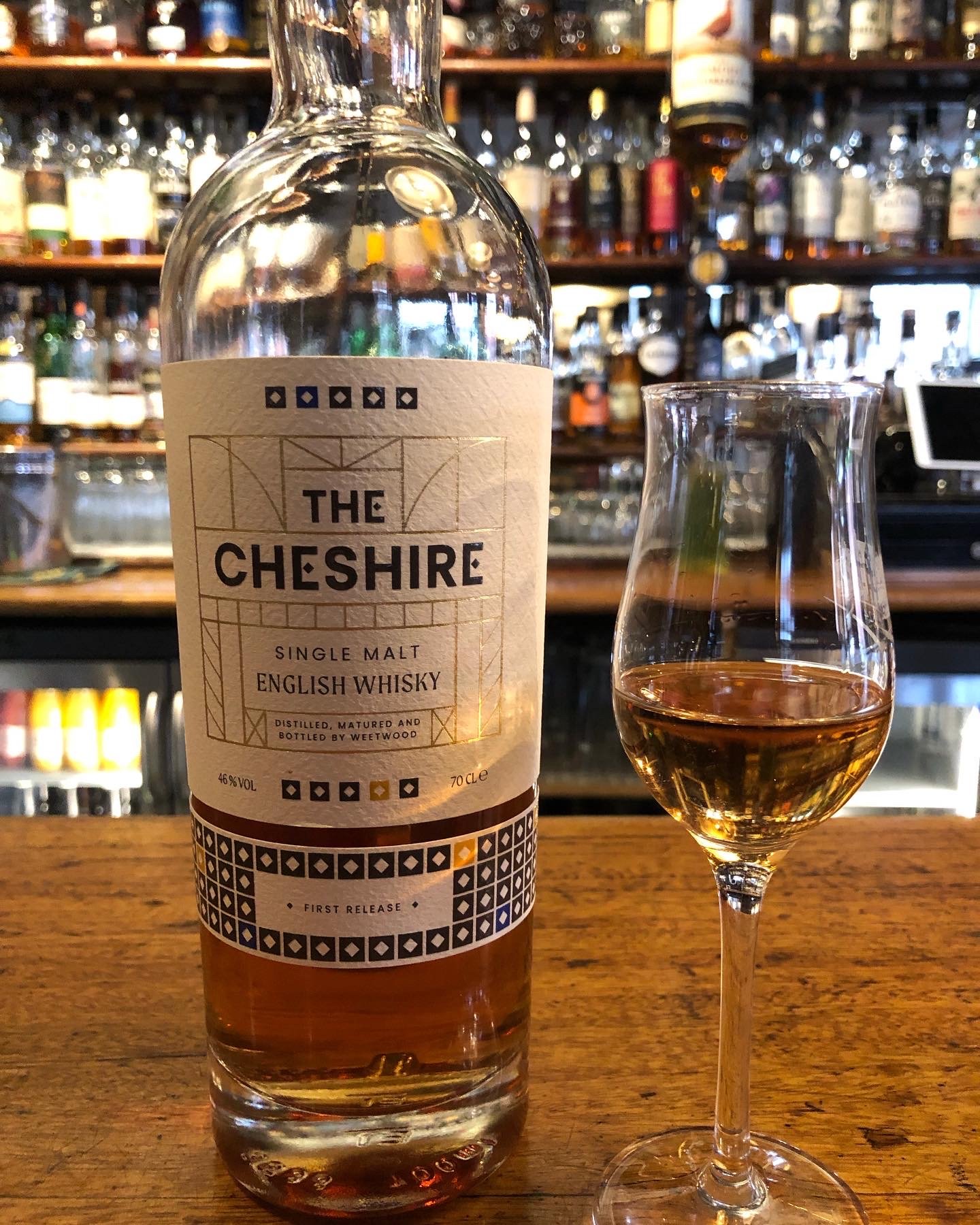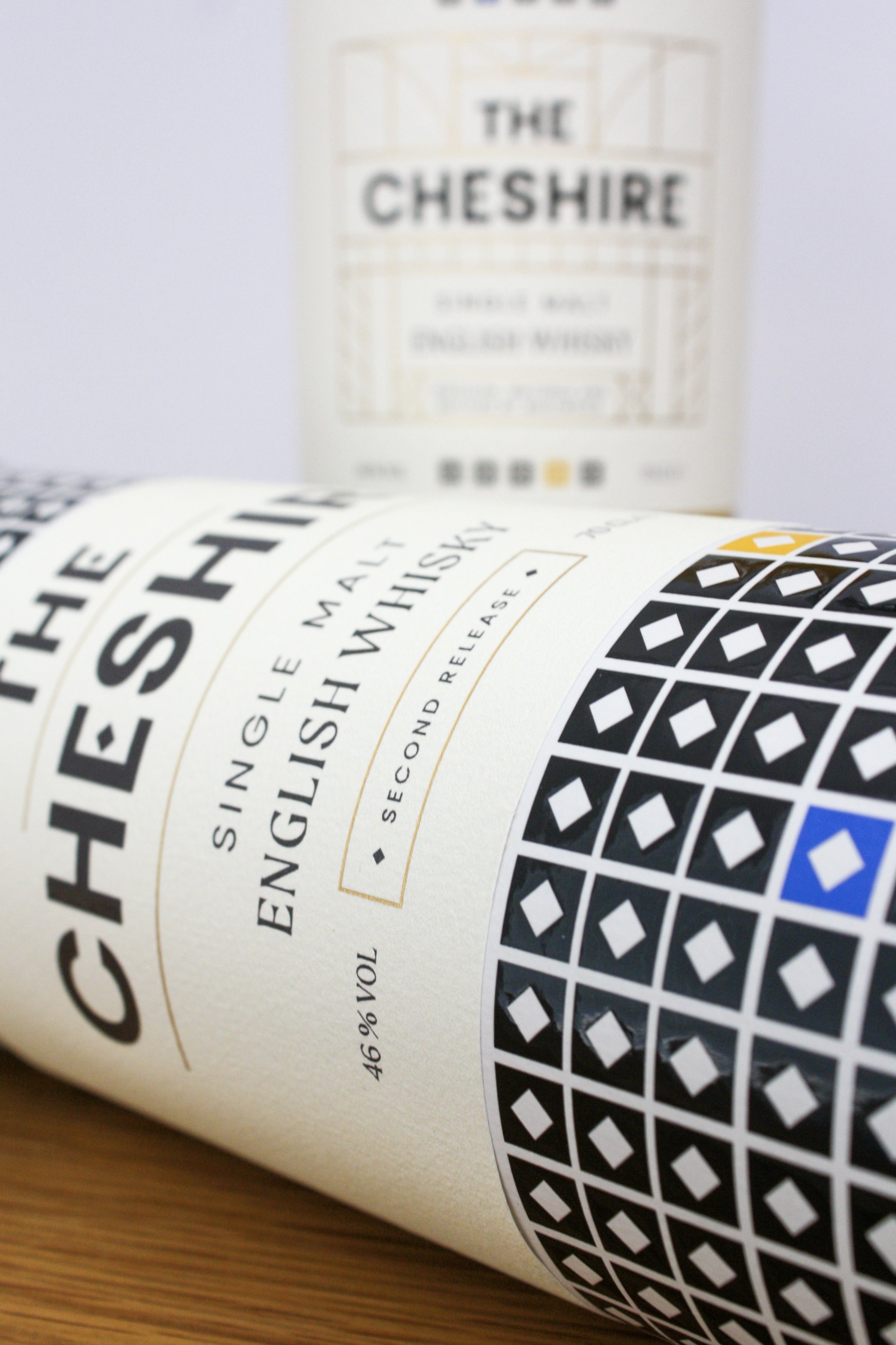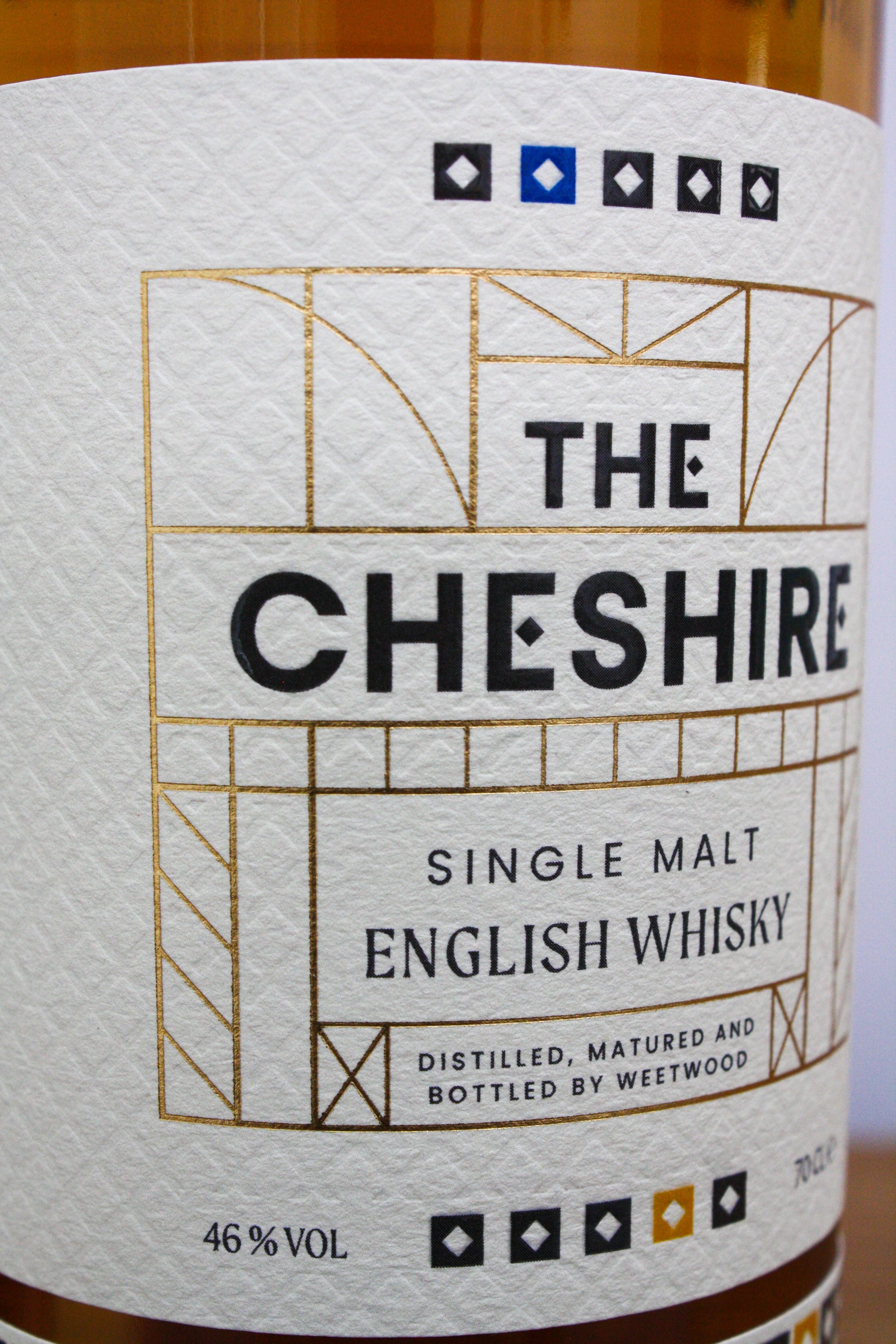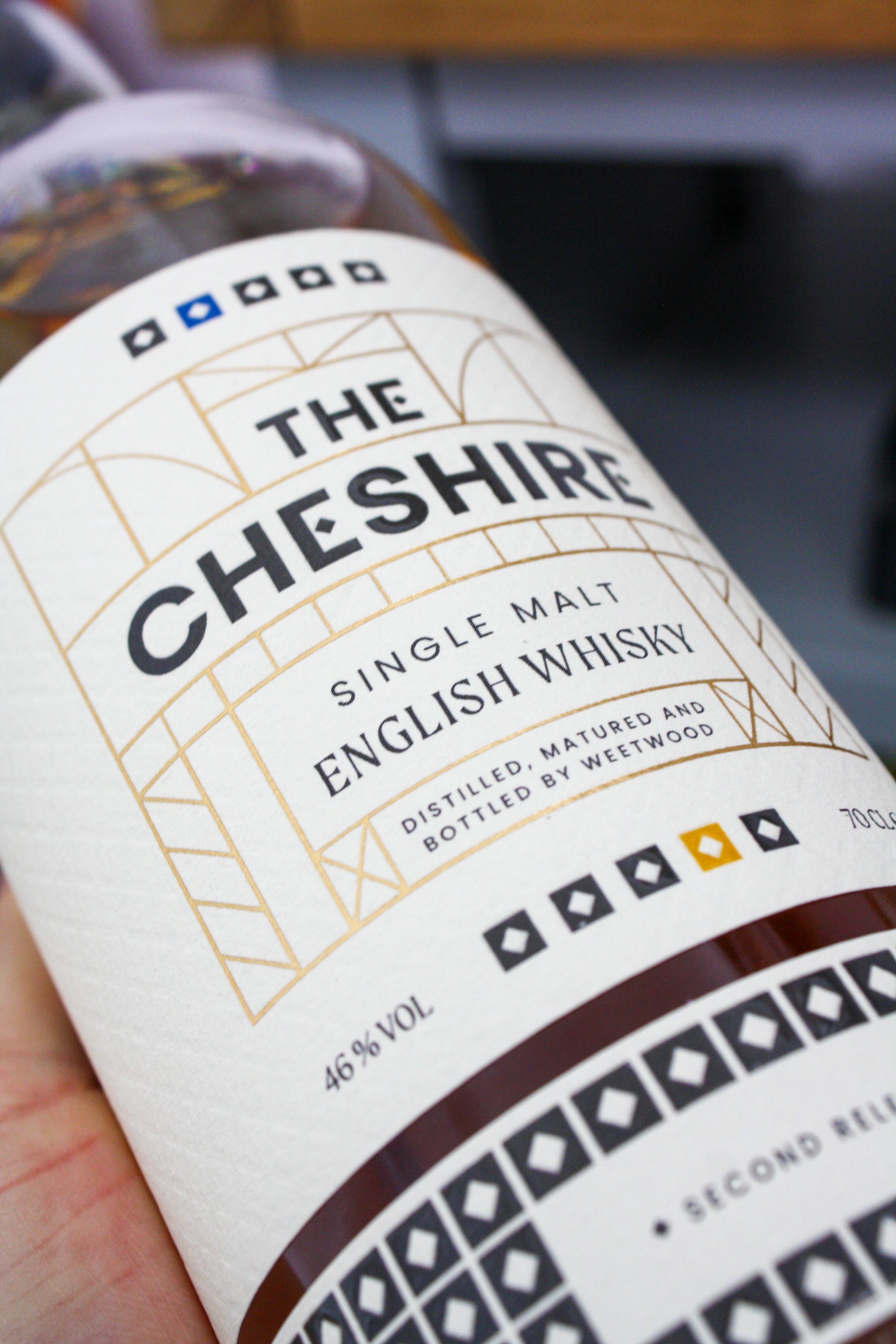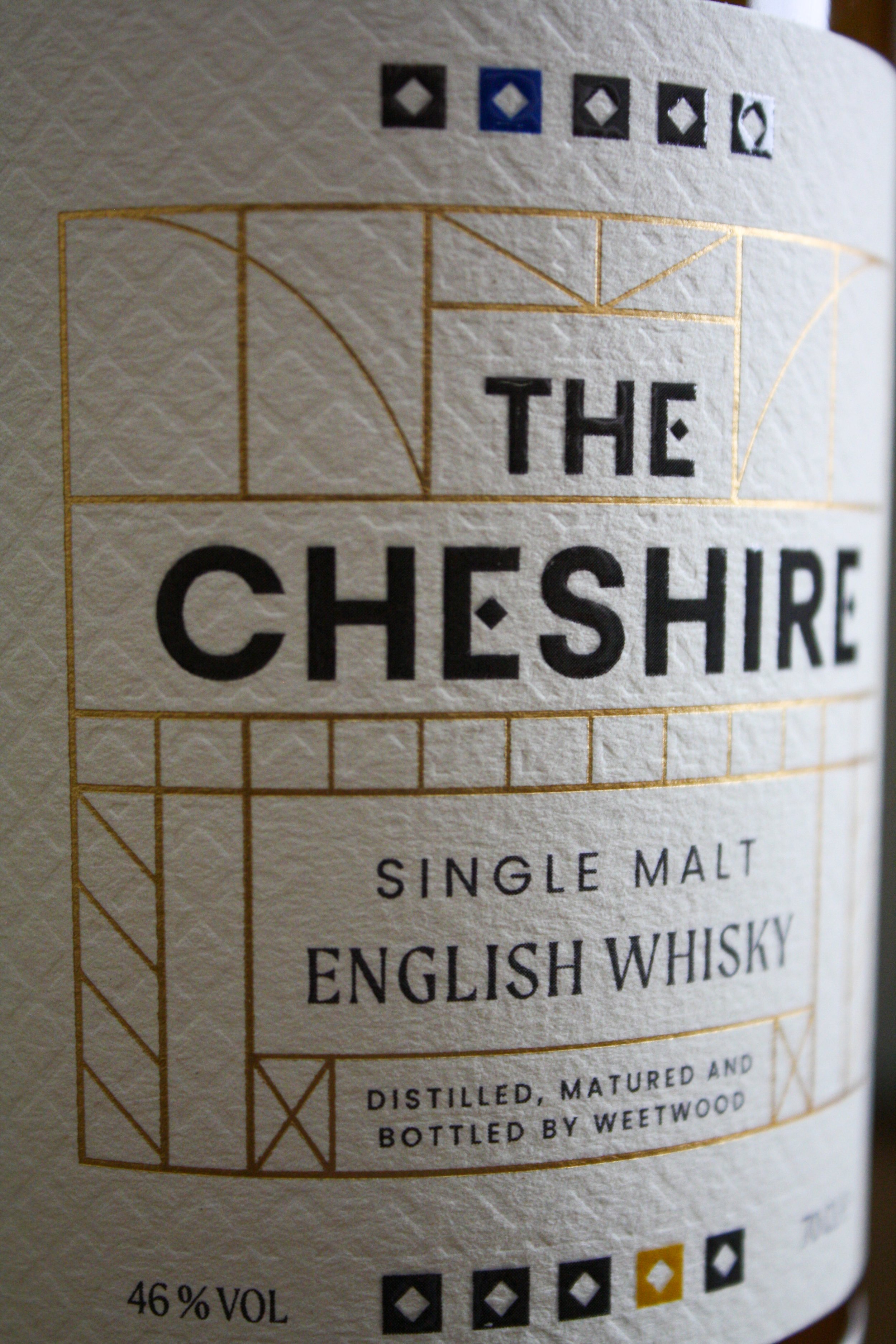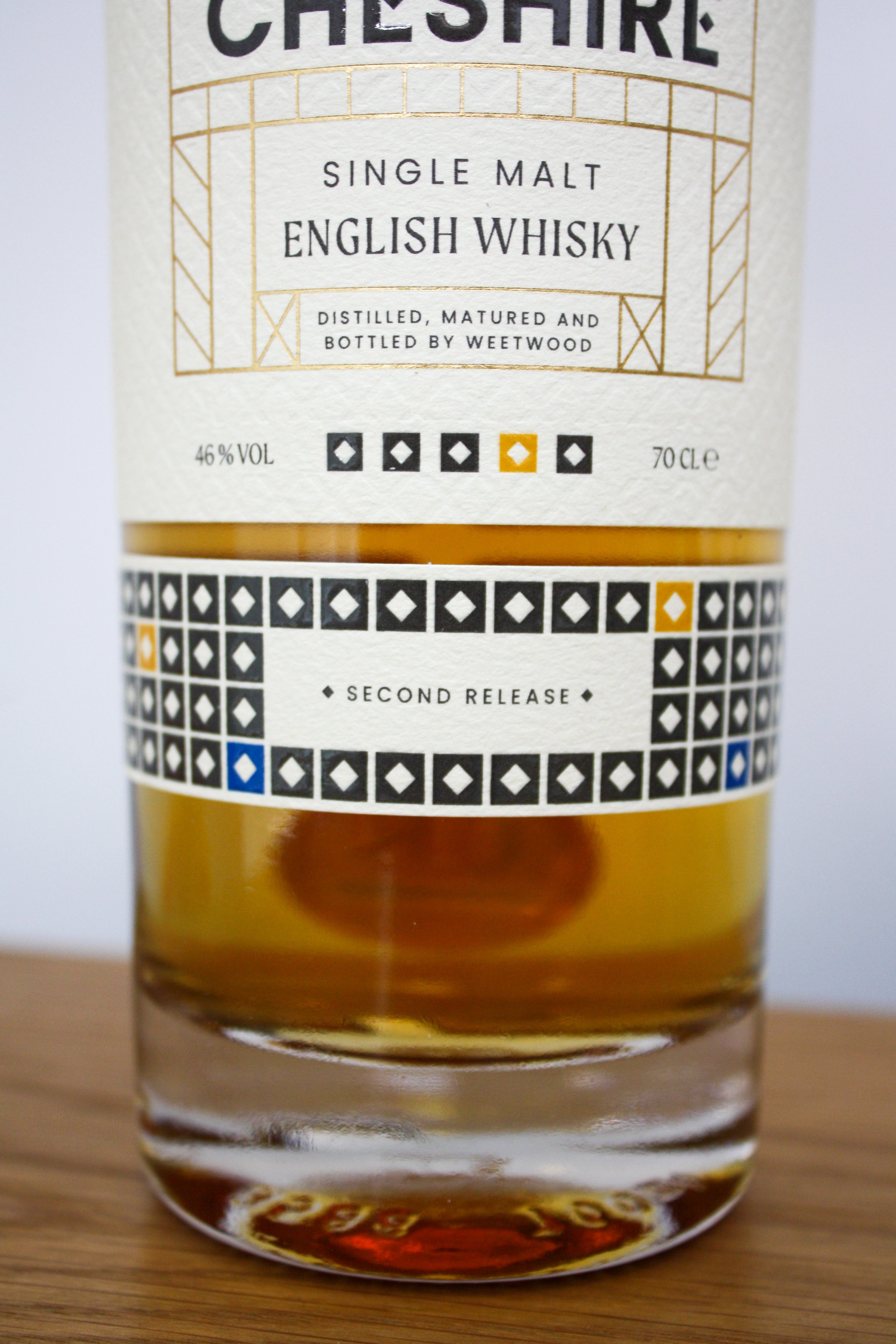The Cheshire
English Single Malt | 46% ABV
Score: 6/10
Good stuff.
TL;DR
Highly quaffable, fruity whisky
I need to pay more attention to new distilleries.
In my last article I reviewed Glencadam 18 and reflected on the disappointing situation the whisky industry is creating by sending older aged whiskies out of most drinker’s price range. Since then, the new 18 year old has appeared on the shelves of one or two retailers at an eye-watering £135-140.
That’s far more than I would be willing to pay and I’m sure that is a sentiment many others will share. Older whisky is no longer for us and Glencadam is far from the only distillery pricing this way. I shudder to think what the 21 year old will be priced at upon its return, but we’ll get over it and look elsewhere.
In that piece I did touch on the fact that there is plenty of younger whisky on the market of very good quality, but overall I leant towards the negative a lot more than the positive. That’s just the way it is sometimes and I think it’s fine to have a bit of a moan and call things out from time to time, but not today.
I am going to try and be a little more positive and focus on what is out there for us that we can and should embrace. I am also heading out of Scotland and down to England, a country that didn’t have any whisky distilleries less than 20 years ago, but is enjoying something of a renaissance in the past decade or so.
We’ve all witnessed the exciting, but frankly bewildering array of new distilleries cropping up left, right and centre in recent years all over the world. If you are in the UK the choice is astonishing. Scotland is where most of our focus tends to be, with more than 40 new distilleries since Kilchoman came online in 2005, but let’s look at England for a moment.
The English Whisky Company was the first one to appear for more than a hundred years when it began production in 2006. Over the next decade the number rose to 14 in 2016, which is when the first English whisky map was produced and where I am sourcing my figures. The second edition in 2020 revealed that number had risen to 24.
Since then, such is the rate of expansion, a new map is produced annually. In 2021 there were 33, 2022 the figure went up to 40, and in April 2023 when the last map was released, there were 49 English whisky distilleries. Most are small scale, and the combined litres per annum capacity of these distilleries is smaller than many of the bigger operations in Scotland.
For context, The English Whisky Guild estimates there will be around 50,000 casks of maturing whisky from English distilleries by 2024, which compared to the 22,000,000 the SWA say are in Scottish warehouses is a drop in the ocean. Put another way, for every cask maturing in England, there are 440 north of the border, but it’s nevertheless a remarkable rate of growth.
I will admit that I haven’t been as quick off the mark to buy whiskies from new distilleries as others have. I am always keen to try new things, but when my only opportunity to try is through buying bottles, and my budget only goes so far, it leaves me with a quandary. Do I take a chance on three or four year old whisky, often at prices in the £50 and above territory, when I can get 10 or 12 year old whiskies from established Scottish distilleries for less? My tendency has tended to be to go for the latter.
I understand the economics mean new distilleries can’t beat these prices, with often much smaller production, and a need to get whisky out at a young age to recoup huge outlays, but as harsh as it may sound, I’ve never seen that as my problem. I have been happy to wait and see how things develop and try them when they are older, which I realise if everybody had that attitude would result in most of these distilleries being doomed to fail.
The occasional times I’ve had the opportunity to try a whisky from a newer distillery, the experience has nearly always been a positive one, yet my mind still goes back to looking at the age statement as a marker towards value. It’s hardwired into my psyche, but I would like to think my attitude is changing and I will be trying more in future. I will gauge the wonderful whisky community and find out where my money will be best placed.
As a result of this new distillery explosion, the title of nearest distillery to me has changed hands a few times in recent years. I would imagine that has been the case for quite a few of you reading this. Henstone in Shropshire was my closest for a while, and the new Penderyn distillery in Llandudno is another one just down the road, although their peated new make won’t be ready for at least another year or so. Weetwood snuck up on me somewhat, but it now holds that crown.
When I saw their first release of The Cheshire in a local bar I was keen to have a taste, and I must say I was suitably impressed. I recall it being a fruity, easy drinking spirit that had a lot going for it. I had a look online and saw it was still available for £60 a bottle. For a young whisky at 46% I felt it was a touch high and decided not to buy the bottle. It is still available as I write this.
This second release is widely available for around £53, which is a definite step in the right direction and had me wavering on the buy button. I then noticed a £10 discount with one retailer and I didn’t hesitate to buy a bottle.
It is made by Weetwood Brewery and Distillery, who’s beers I have been enjoying for some time. A pint of their Cheshire Cat blonde ale on a warm day is a lovely thing, although I’ll also take one on a cold day if I’m being honest.
They started brewing in 1992, but have only been making whisky since 2018, with every part of the process from mashing to bottling done on site.Their website says they are looking at the impacts of different malts, yeasts, distillation cuts, cask types, sizes, maturation ABV and environments, and planning to showcase these variables with releases over the coming years.
That all sounds great, and as well established brewers, you’d have to feel they are in a perfect position to experiment and produce some interesting whiskies, and I for one will be keeping an eye out. They have recently released their Seaside Edition, which has been finished in ex-Islay casks, which from my experience usually means Laphroaig quarter casks.
Review
The Cheshire English Single Malt, Second Release, 46% ABV
£53rrp, £43 paid. Still widely available
Most new whisky distilleries are relying on cask to bring flavour to a young product which is always likely to be better several years down the line when they have some older stock to add to the mix. STR (shaved, toasted, re-charred) is always popular, as are sherry and wine casks. Smaller casks can also accelerate the maturation process. Weetwood are no exception with their first releases.
This second release is matured in American oak STR quarter casks and then finished in European oak barrels. I assume that means ex-bourbon casks with a sherry cask finish, but when sherry is more often than not matured in American oak too, it would be nice to have it spelled out. 2170 bottles were produced for this batch, at 46%, non-chill filtered and natural colour.
The bottle design is striking, especially the cylindrical tube it comes in, with the white diamonds within black squares, and the sporadic yellow and blue squares among them. I’m not sure if that design has any significance other than being appealing to the eye, but I like it.
Hopefully the liquid will be just as appealing.
Score: 6/10
Good stuff.
TL;DR
Highly quaffable, fruity whisky
Nose
Super bright and fruity. The aromas jump from the glass. Orchard fruits come to the fore mostly, but there’s also hints of melon, pineapple, butterscotch candy sweets, coconut and bubblegum. I’m also getting furniture polish, plasticine, raisin, vanilla and a slightly balsamic sharp acidity. A very pleasant start.
Palate
The fruitiness from the nose is very much present again. It’s sweet initially with juicy orange, apricot and ginger ale, before a bitterness of oak char, chocolate and dark roast coffee comes through. Its youthfulness is apparent. It’s quite peppery, and I’d suggest a little bit young and raw, but certainly not in such a way that it ruins the experience. After that appears a lovely wave of coconut and vanilla as we head towards the finish, which is moderate in length, as the bitter notes start to dissipate with the coconut, chocolate and vanilla remaining.
The Dregs
Tasty and very quaffable liquid. One you could easily take down in an evening with a bunch of friends. The sweet fruits and bitter notes compliment each other nicely, but it is youthful and slightly jagged on the palate, which is not to be unexpected from a distillery that only started producing new make in 2018, and a small drop of water dials that down a little, but not completely. I am being a little picky, and I’m particularly enjoying that coconut on the palate, which comes in quite late in the development. The nose is excellent too.
Overall this is a bottle I am glad to have bought and I look forward to seeing what comes next from my local distillery. Once it reaches seven or eight years I’d love to try something entirely from an ex-bourbon cask. I think it could be very good indeed, and I would recommend checking them out if you get the chance to have a pour.
I don’t know if the whisky boom we are in the midst of is sustainable in a world where everybody’s budgets are being squeezed, and more and more distilleries and brands are vying for our attention than ever before. Only time will tell on that front. I suspect companies such as Weetwood, who have a thriving brewery to keep the turnover of money going, will be better placed than most to survive any such difficulties.
For now, whisky appears to be in an excellent place, and the new wave of distilleries, whether they are located in Scotland, England or the other side of the world, are going to keep the more established brands on their toes. Especially once they start to find their stride.
Score: 6/10
Tried this? Share your thoughts in the comments below. RT
-
Dramface is free.
Its fierce independence and community-focused content is funded by that same community. We don’t do ads, sponsorships or paid-for content. If you like what we do you can support us by becoming a Dramface member for the price of a magazine.
However, if you’ve found a particular article valuable, you also have the option to make a direct donation to the writer, here: buy me a dram - you’d make their day. Thank you.
For more on Dramface and our funding read our about page here.

